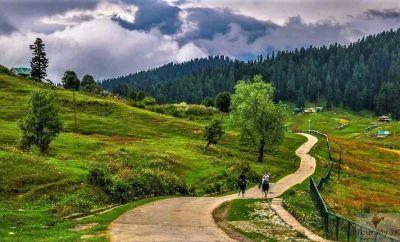Places To Visit
Kashmir is a destination that captures the hearts of all tourists. This area is a veritable paradise, tucked away in India's northernmost region. Jammu and Kashmir Tourism has everything you could want, including adventure, spirituality, the beauty of nature, and historical wonders. It is understandable why this location is one of the most popular in India given its magnificent mountains, glistening lakes, verdant valleys, colourful gardens, and famous temples.
Are you prepared to explore? This Jammu and Kashmir Travel Guide will make sure you don't miss a beat as we take you on a fast-paced tour of the best places to visit in Jammu and Kashmir, from the verdant meadows of Gulmarg to the heavenly atmosphere of Vaishno Devi Temple.
1.Srinagar
Tourists from across the world recognize Srinagar as one of the premier places to visit in Kashmir. People can observe the stunning Dal Lake while cruising on Shikaras which makes it an ideal place for relaxing vacations. The Mughal Gardens, like Nishat Bagh and Shalimar Bagh, showcase the grandeur of Kashmir’s history. All annual calendar periods find Srinagar among the beautiful places to visit in Kashmir in June because of its flowering environments and views. The Kashmir tourist places list should include this destination because it showcases busy markets local handicrafts and Kashmiri food dishes.
2.Gulmarg
Gulmarg emerged as among the foremost Kashmir tourist places due to its beautiful combination of snow-covered mountains and green pastures. Gulmarg is well-known as a destination
+Read More
Similar Destinations
Get your free quote
Attractions in Jammu and Kashmir
Popular Tours in Jammu and Kashmir
Attractions in Jammu and Kashmir
Popular Stays in Jammu and Kashmir
Latest Articles








